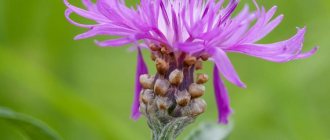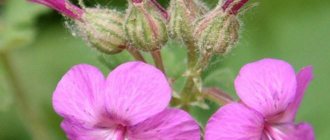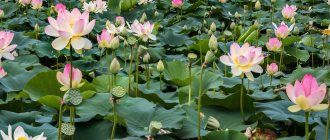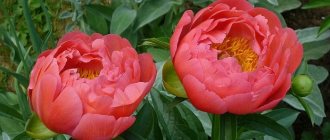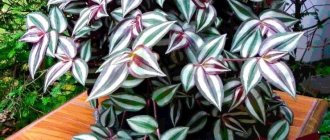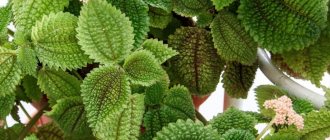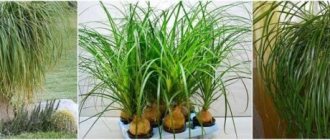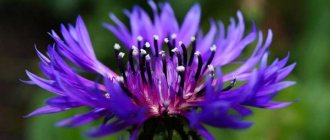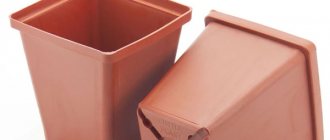Cornflower Cornflower is a magnificent representative of the Asteraceae family, which can become an...
is a magnificent representative of the Asteraceae family, which can be an ideal plant for decorating flower beds, balconies and gardens. Anyone who has ever seen a blooming cornflowerCornflower is a magnificent representative of the Asteraceae family, which can become an id..., was probably fascinated by its beauty.
Blue or field cornflowerCornflower is a magnificent representative of the Asteraceae family, which can become id..., was revered in Rus' as a flower symbolizing devotion and innocence. A representative of the Asteraceae, it attracts attention with its tenderness and brightness. Since the 60s, cornflowerCornflower is a magnificent member of the Asteraceae family, which can become the id... blue has been named the national plant of the Estonians.
Cornflower Cornflower is a magnificent representative of the Asteraceae family, which can become an ideal... blue is often present as a bright “guest” in city flower beds and flower gardens, and thanks to its medicinal properties, it was recognized as a medicinal plant and included in the book of medicinal herbs.
Cornflower blue description
Cornflower Cornflower is a magnificent representative of the Asteraceae family, which can become i..., found among meadow grasses, belongs to the representatives of the Asteraceae, a group of Asteraceae. In common people, the plant was called blue flower, rye flower, hairy flower, and blue flower. Thanks to its rapid growth rate and unpretentiousness, cornflowerCornflower is a magnificent representative of the Asteraceae family, which can become i... settled far beyond the borders of its homeland.
Among the cornflower variety there are perennial and annual varieties. Perennial plants withstand bad weather, cold, and drought more steadfastly; flowers of this type grow quickly, get along with all types of plants and sometimes some survive from the site.
Cornflower Cornflower is a magnificent representative of the Asteraceae family, which can become an i... blue one, is little susceptible to disease, reproduces without problems, blooms for a long time, and therefore is so loved by gardeners. Throughout the growing season, the leaves of cornflowerCornflower is a magnificent representative of the Asteraceae family, which can become i... remain green, in the fall, with proper care, the plant can turn green again, and even delight you with flowers.
The stem of the plant is thin, erect, and prone to lodging, like all meadow plants. Flowering is long, the first from May to June, and with proper care, it blooms again in August, with bright blue flowers.
After flowering, it forms a small seed box, which must be removed in time to avoid the flower turning into an annoying weed.
It is customary to cut the seed pod until it cracks; if necessary, the seeds are removed and dried.
Blue cornflowerCornflower is a magnificent representative of the Asteraceae family, which can become an... often found as a weed in fields sown with rye. Cultivated rye is an annual (biennial) herbaceous plant of the Evil family..., thanks to the long and strong root system, the flower grows quite long and is capable of endure any weather changes.
Growing quickly, it can completely clog a cereal crop, so the plant is an undesirable guest in the fields.
Shades of cornflowerCornflower is a magnificent representative of the Asteraceae family, which can become i... blue varies from dark blue to purple, the stem of the plant is thin but long, reaching a meter in height. The plant bears fruit with asteraceous fruits, a tufted oblong achene, and oval shape.
Composition of cornflower flowersCornflower is a magnificent representative of the Asteraceae family, which can become i... includes a glycoside, cyanogenic and pigment, these substances are mildly toxic, therefore, when using the plant for medicinal purposes, you must clearly know the dosage and its contraindications.
The rich color of cornflowerCornflower is a magnificent representative of the Asteraceae family, which can become an id... received due to the presence of anthocyanin in the composition, this element has antioxidant properties.
In addition to the above, cornflowerCornflower is a magnificent representative of the Asteraceae family, which can become i... blue is rich in organic acids, resins, alkaloids, tannins, B vitamins, retinol, esters, phenols and flavones.
Community of little green men
Centaurea, Cornflower. One-, two- and perennial rhizomatous plants. The stems are erect or recumbent, reaching 120 cm in height in some species. The leaves are arranged in an alternate order, both whole and pinnately dissected.
Like all Asteraceae, in cornflowers their “flower” is an inflorescence-basket, in which the outer large funnel-shaped flowers with a jagged edge are sterile, and the middle ones, small tubular flowers, are bisexual and produce seeds. All flowers are covered from below with a wrapper of numerous leaves. A terry basket is considered to be a basket with an increased number of rows of funnel-shaped sterile flowers located along the edge, and a reduced number of middle narrow-tubular flowers. Depending on the species, they bloom from June to September, usually for a long time, 40-45 days.
Etymology
The name of the genus comes from the Greek kentaurion - “centaur”: in honor of the famous centaur Chiron, who was aware of the healing properties of herbs. The Latin name centaurea (centaurea) translates as “one hundred yellow flowers.” Although we are accustomed to blue cornflowers, they come in white, yellow, blue, light blue, pink, and purple.
In different regions of Russia, cornflowers are called commotion, ringing grass, bean grass, hair grass, blue flower, etc.
Types and varieties of cornflower
The genus contains about 500 species, distributed in Europe, Asia, North Africa, and America. About 10 species of annual and perennial plants are grown in cultivation, used to create flower beds, mixborders, and flowering lawns. Several species of annual and perennial plants are grown in cultivation. Annual cornflowers are quite popular in cultivation. The most commonly grown cornflowers are blue and musk.
Blue cornflower (Centaurea cyanus)
It is also sometimes called field cornflower or blue cornflower, a plant native to the Mediterranean. An annual plant with a height of 20 to 70 cm. The leaves are entire, narrow (lanceolate), pointed, slightly pubescent. The baskets are 2.5-4 cm in diameter, the marginal flowers are funnel-shaped, in natural species they are bright blue, in varieties they can be white, pink, or red. Blooms from June until frost. Propagated by sowing to a permanent place in the spring or before winter, self-seeding, and used to create Moorish lawns. English companies offer many varieties of this plant. Among them are 'Black Ball' with a chocolate-colored basket, 'Blue Diadem' of deep blue color, and 'Florence Pink' - a compact bush with a soft pink basket. The British call cornflowers cornflower.
Blue cornflower, pink-flowered variety
Musk cornflower (Centaurea moschata)
More often it is called musk amberboa (Amberboa moschata). Cornflower received this name due to its subtle pleasant aroma because... in Arabic ambar, ambra - aroma. This is a spectacular large cornflower, whose homeland is Transcaucasia. This annual plant is widely grown throughout the world, mainly as a cut flower. In culture since the 17th century. The stem is tall (60-80 cm), highly branched, erect. The leaves are bright green, pinnate, with a serrated edge. At the end of the stems there are large (up to 8 cm in diameter) inflorescence-baskets.
Their colors are varied - white, yellow, lilac, purple. The basket consists of wide funnel-shaped flowers with cut out edges. It blooms from June to October, bears fruit abundantly, and often self-sows. It is not picky about soils, but prefers neutral, well-drained, rich soils. Drought resistant. In England this plant is called Sweet Sultan or Dairy Maid and is most often grown for cutting. The variety 'Bride', which has a large white flower, and the group of varieties 'Morgan' with characteristic yellow baskets look especially good.
Mountain cornflower (Centaurea montana)
The most famous representative of perennial cornflowers. Its homeland is the mountains of Western Europe. A perennial plant, it forms a beautiful hemispherical bush about 60 cm high. The basal leaves are entire, lanceolate, whitish-pubescent, on short petioles, collected in a rosette, overwintering. The inflorescence is a deep blue basket, 6 cm in diameter. It blooms from June for 2-2.5 months.
Mountain cornflower
Varieties of mountain cornflower:
'Parham' - with a purple-lavender basket,
'Grandiflora' - with a large (up to 8 cm in diameter) blue flower,
'Alba' - white flower,
'Rosea' - pink flower,
'Violetta' - dark purple flower.
Soft cornflower (Centaurea mollis)
A shade-tolerant plant that can be found in the upper forest and subalpine zones of the Carpathians. Long-rhizomatous perennial with lodging shoots 30-35 cm long. Forms a dense thicket of simple oval silvery leaves on short petioles. The baskets are bright blue, 3-4 cm in diameter. Blooms from June.
Fisher's cornflower (Centaurea fischeri)
Endemic to the Caucasus, grows in subalpine meadows. Root shoot perennial 30-50 cm high. Leaves are oval with a whole edge, silvery with pubescence. The inflorescences are large, up to 9 cm in diameter, fawn, light pink, lilac-pink. It blooms for a long time, from the end of June until almost the end of August. An unpretentious winter-hardy plant. Grows well in open areas on any soil with moderate moisture.
Fisher's cornflower grows quickly, forming a loose thicket. It is very decorative during the flowering period, but in August withered inflorescences spoil its beauty. If you constantly cut off the flowering baskets of cornflowers, this will not only preserve its neat appearance, but will also prolong flowering.
White cornflower (Centaurea dealbata or Psephellus dealbatus)
Known in nature in the mountains of the Caucasus and Northern Iran. In cultivation it forms a fairly dense, non-decaying bush up to 60 cm high. The lower leaves are on long petioles, strongly dissected, the stem leaves are sessile, slightly dissected or entire. The leaves are dark green above and whitish-pubescent below. The inflorescences are solitary, up to 4 cm in diameter, with matte pink, deeply fringed flowers.
This species has a very beautiful variety 'John Coutts' with large inflorescences, in which the outer flowers are pink, fringed, and the middle ones are yellow. Blooms from late July to September.
Russian cornflower (Centaurea ruthenica)
It grows naturally in the European part of Russia, the Caucasus, Western Siberia, Eastern Kazakhstan, and Western Europe. The plant is tall, 100 cm or more in height, with a powerful tap root system. The stems are not numerous, branched in the upper part. The leaves are bluish, pinnately divided, serrated along the edges. Baskets up to 6 cm in diameter. The marginal flowers are sandy-yellow. Blooms from mid-July for 30-35 days.
In addition to these species, you can also grow Marshall cornflower (Centaurea Marschalliana) and other species.
Wild species of cornflower
Eastern cornflower (Centaurea orientalis)
A perennial plant 50-100 cm high. The involucre leaves are leathery, comb-ciliated along the edge. The inflorescences-baskets are large, 3-4 cm in diameter. Blooms in June–August.
It grows mainly in the black earth zone (steppe on chalk).
Phrygian cornflower (Centaurea phrygia)
A perennial plant 30-130 cm high. The inflorescences-baskets are large, up to 5 cm in diameter, the middle leaflets are involucre at the apex with a constriction and black fringed-dissected appendages. Blooms June–September.
Grows throughout central Russia (meadows, forest edges, clearings).
Cornflower (Centaurea preudophrygia)
A species very similar to v. Phrygian. It is distinguished by the brown (rather than black) color of the appendages and the absence of constriction on the involucre leaves. Blooms June–September.
Grows throughout central Russia (meadows, forest edges, clearings).
Cornflower (Centaurea jacea)
Perennial plant 20-200 cm tall. Inflorescences are baskets up to 5 cm in diameter, involucre leaves at the top with membranous light brown appendages. Blooms June–October.
Grows throughout central Russia (meadows, forest edges, clearings).
Cornflower care
All cornflowers (with the exception of soft cornflower) are light-loving plants. In relation to moisture, cornflowers are divided into two groups. Meadow knapweed, Phrygian knapweed, soft knapweed, mountain knapweed and Fischer's knapweed are plants that prefer moderately moist soils, large-headed knapweed, Marshall knapweed, whitened knapweed and Russian knapweed are drought-resistant species. All cornflowers are cold-resistant; they are practically not damaged by frost. Annual cornflowers grow all summer until late autumn.
Cornflowers need fertile, humus-rich soils, preferably neutral ones. But musk, Marshall, Russian and mountain cornflowers prefer alkaline soils. Undemanding to care. In the spring, the soil around the plant is loosened; after flowering, the stems are removed, leaving a rosette of basal leaves. Fertilizers are used only when growing cornflowers for cutting.
Cornflower propagation
Cornflowers grow quickly and reproduce well by dividing the rhizome (in spring or late summer) and by seeds (sowing before winter or early spring).
Where is it used and are there any contraindications?
Dried cornflower flowers are often used for medicinal purposes. Cornflower is a magnificent representative of the Asteraceae family, which can become an ideal... Homeopaths use cornflower raw materialCornflower is a magnificent representative of the Asteraceae family, which can turn blue, for the preparation of diuretic infusions, infusions and anti-inflammatory herbal teas.
Cornflower blue decoction is recommended for eliminating edema, improving diuresis, for heart ailments, urinary tract diseases, cystitis, urethritis and for the treatment of the prostate.
Infusion of cornflowerCornflower is a magnificent representative of the Asteraceae family, which can become i... blue. It regulates the water-salt balance in the body, eliminates the first signs of disorders of the gastrointestinal tract, washes sand from the kidneys, has a choleretic, anti-inflammatory effect and a slight analgesic effect.
Cornflower decoctions have antispasmodic and mild sedative effects. Cornflower Cornflower is a magnificent representative of the Asteraceae family, which can become an ideal... used for cholecystitis, liver diseases, metabolic disorders in the body, cholangitis and diseases of the nasopharynx.
Cornflower Cornflower is a magnificent representative of the Asteraceae family, which can become an ideal... often found in anti-inflammatory and diuretic preparations, containing bearberry, licorice root and ginger. Cornflower infusion is taken according to Art. l. up to 4 times a day, on an empty stomach.
Cornflower decoctionCornflower is a magnificent representative of the Asteraceae family, which can become an ideal... used in cosmetology, lotions are prepared from the plant, the extract and esters are included in the composition of creams, moisturizing and soothing pastes for facial care. Frozen cube of cornflower decoctionCornflower is a magnificent representative of the Asteraceae family, which can become an ideal... tones the skin, fights increased oiliness, irritation, redness, enlarged pores and eliminates acne.
Thanks to its antibacterial and disinfecting effects, herbalists use cornflower infusions. Cornflower is an excellent representative of the Asteraceae family, which can become an ideal... in the treatment of eyes and respiratory infections.
The plant is also used to rinse hair; the flower stimulates hair growth, nourishes the roots, and relieves dandruff and itching. In combination with a decoction of nettle and burdock, cornflowerCornflower is a magnificent representative of the Asteraceae family, which can become an ideal... blue fights alopecia, makes hair strong, thick and shiny.
Cosmetology actively uses cosmetic preparations based on cornflowerCornflower is an excellent representative of the Asteraceae family, which can become an ideal... to eliminate blue circles, swelling, excessive puffiness under the eyes, and lotions with a decoction of cornflowerCornflower is an excellent representative of the Asteraceae family, which can become an ideal... blue to eliminate irritation and redness of the eyes.
Alcohol tincture of cornflowerCornflower is a magnificent representative of the Asteraceae family, which can become an ideal..., in a totem with celandine, it fights fungal skin infections, ulcers, eczema, and also helps speed up the healing process of wounds and abrasions. Cornflower Cornflower is a magnificent representative of the Asteraceae family, which can become... blue also has hemostatic properties, it is used during uterine blood loss. Rinsing with a decoction of cornflowerCornflower is a magnificent representative of the Asteraceae family, which can become id... and oak bark, will eliminate gum disease and bleeding.
Like all medicinal herbs, cornflowerCornflower is a magnificent representative of the Asteraceae family, which can become id...blue has its own contraindications. The flower is contraindicated for pregnant women and nursing mothers, as it is mildly toxic and affects blood clotting. During pregnancy, cyanide, contained in large quantities in cornflower, Cornflower is a magnificent representative of the Asteraceae family, which can become i..., are able to penetrate the placental barrier and negatively affect the fetus.
In addition to expectant mothers, persons with individual intolerance and allergy sufferers should not take medicinal infusions of cornflower. Cornflower is a magnificent representative of the Asteraceae family, which can become i..., without consulting a doctor. People with high blood clotting and open stomach ulcers should also refrain from treatment with herbal decoctions.
Cornflower flowers: contraindications
When taking decoctions and tinctures, it is important to know that there are contraindications for cornflower flowers, which must be taken into account before treatment.
For example, you should never rule out individual intolerance to the components of the product, because some components of the plant are considered quite toxic. The most dangerous are the cyan substances of the flower, which are contained in small quantities, but can also cause harm to the body.
Despite the fact that cornflower flowers have minimal contraindications, they also need to be taken into account. In addition, cornflower belongs to the group of mildly poisonous plants. That is why it should not be taken by pregnant women, small children or during breastfeeding. Flowers should not be used to prepare decoctions for uterine bleeding, as this will only worsen the situation. In addition, if you have problems with women’s health, then drinking a decoction or tincture is prohibited. Read the article: Calendula - medicinal properties, contraindications and applications.
Growing
Growing and planting cornflowerCornflower is a magnificent representative of the Asteraceae family, which can become an... not a difficult task. As already mentioned, the wild “blue flower” is mostly a weed, so it does not require painstaking care, has excellent survival rate and can withstand bad weather.
However, if you want to achieve several blooms per season and large inflorescences, you need to know some of the subtleties of planting cornflower. Cornflower is a magnificent member of the Asteraceae family, which can turn id... blue.
First, decide on the planting site, cornflowerCornflower is a magnificent representative of the Asteraceae family, which can become an i... loves sunny and windless areas, because with a lack of sun it stretches upward, its flowers become smaller, and in strong winds it is prone to lodging. Therefore, choose sunny, windless areas.
The only requirement for soil is that the soil is not swampy and fertile. If you plan to plant several different plants to form a composition, then the first rows should belong to cornflowers. Cornflower is a magnificent representative of the Asteraceae family, which can become an ideal... so that the shadow from other plants does not fall on them. The only variety of cornflowerCornflower is a magnificent representative of the Asteraceae family, which can become id... blue, which is able to tolerate shade can be called “cornflowerCornflower is a magnificent representative of the Asteraceae family, which can become id... soft,” but it will also suffer from a lack of sunlight and become smaller year after year.
Planting blue cornflowerCornflower is a magnificent representative of the Asteraceae family, which can become an ideal... you can do it in a row, or in a checkerboard pattern, or in pots, the main thing is to give each specimen plenty of space. If you intend to plant the plant in rows, then follow the “step” of at least 45 cm between flowers.
Proper planting and adherence to agricultural technology will give you a plant that is not only healthy, but also healing. Indeed, on fertile soils and with good care, the plant fully reveals its medicinal potential, accumulates valuable microelements and retains them.
Purchased cornflower seedsCornflower is an excellent representative of the Asteraceae family, which can become id...blue, it is better to sow it in the spring, when the earth has warmed up enough, sowing in beds about 2 cm deep, without thickening. The first shoots will appear within a week; it is better to thin out densely growing seedlings immediately.
If you are planting cornflower seedlings, then plant them in holes no more than 10 cm deep, based on the size and length of the roots (the soil should completely cover them, covering three centimeters of the stem).
Keep the distance between seedlings in increments of 30-40 cm.
Flowers are propagated by seed; after flowering, the cornflower is a magnificent representative of the Asteraceae family, which can become... a seed pod is formed, which, after ripening, will be ready to give you new seeds for planting.
The unpretentiousness of the plant makes it possible for even beginners and inexperienced gardeners to grow it, and its endurance and vitality will save you from painstaking care. Cornflower Cornflower is a magnificent representative of the Asteraceae family, which can become an ideal... blooms for a long time and fits perfectly into any landscape, giving it brightness and airiness. And thanks to its ability to survive, the plant is suitable for absolutely any planting, both in open ground and in greenhouse conditions.
Cornflower in folk medicine
Since ancient times, healers have included cornflower flowers in various potions and health-improving preparations.
For colds
A good vitamin composition and strong active ingredients can speed up recovery from flu, colds, bronchitis and significantly alleviate the general condition. It is recommended to take the following components:
- dry cornflower – 20 g;
- honey – 15 g;
- water – 250 ml.
The dry product must be poured with 250 ml of boiling water. Leave to infuse for 30–40 minutes. Filter, add a spoonful of honey and drink all the liquid 20 minutes before eating. This will give the body strength to fight the disease and ease the course of the disease.
For hypertension
For hypertension, the most effective herbal mixture is one that includes the following components:
- dry yarrow – 10 g;
- valerian root – 15 g;
- white mistletoe – 10 g;
- dry rowan berries – 20 g;
- dried cornflower flowers – 15 g;
- hawthorn fruits – 10 g.
The mixture of herbs and fruits must be crushed and mixed; you can use a blender. Pour the finished mixture into a container, and then take 1 tablespoon per glass of boiling water. Leave for 20–30 minutes, strain before use. A glass is enough for 3 doses, 70–80 ml each, immediately after meals.
For vision
This collection will help improve vision in myopia. You will need:
- cut aloe leaves – 20 g;
- eyebright herb – 50 g;
- cornflower flowers – 50 g;
- honey – 600 g;
- red wine – 500 ml.
Fresh aloe leaves should release excess juice, so you need to cut them and leave them for 15-20 minutes. Place eyebright grass, cornflower flowers and aloe leaves, washed from excess juice, in a blender or coffee grinder and grind until smooth. Now you need to build a water bath, place honey, red wine and medicinal herbs in a container. Steam for about 50 minutes, maintaining the temperature at 60–70 degrees. After straining, you can start taking it. The optimal dosage is 1 tablespoon three times a day.
For nephritis, inflammation in the ureter
The following phytotherapeutic preparation should be prepared:
- bearberry leaves – 15 g;
- juniper branches – 20 g;
- field cornflower petals – 15 g.
Mix the ingredients into a single mass and scoop out 1 small heaped dessert spoon. This way you can obtain the required proportions per 250 ml of liquid. Leave the composition for 15 minutes, pour boiling water over it. Filter using a sieve or folded cheesecloth. Take 1 tablespoon three times a day.
For urolithiasis
The following medicinal collection will help get rid of urolithiasis:
- blue cornflower flowers – 15 g;
- fresh nettle – 10 g;
- leaf from a walnut tree – 15 g;
- calendula – 15 g;
- dry speedwell – 15 g;
- tricolor violet – 25 g.
The raw materials must be thoroughly mixed. Pour 1000 ml of hot water, but not boiling water. Leave to cool for 5–6 hours. You can simply strengthen the infusion by wrapping the container in towels or a blanket. Then place the container on the stove and keep it on the verge of boiling. 10 minutes is enough. Drink 1 tablespoon every 4 hours, but no more than 5 times a day.
For the genitourinary system
Various problems with urination will be delicately solved by an infusion made according to this recipe:
- lingonberry leaf – 1 tablespoon;
- cornflower flowers – 1 tablespoon;
- boiling water – 500 ml.
The herbs must be poured with boiling water and left to steep under the lid. 40 minutes is enough, but you can wait a little longer, this will increase concentration and effect. After straining, take in small portions of 50–70 ml. The entire infusion should be consumed within a day. The positive effect is felt after the third dose. The therapeutic course is no more than a week.
For problems with the liver and gall
The following tincture is used:
- blue cornflower flowers – 20 g;
- good vodka – 300 ml.
The dry plant must be placed in a container with vodka and shaken thoroughly. Infuse in a dark, slightly cool place. It is critical to protect the cornflower from direct sunlight. After 10 days you can take the drug. The optimal dosage is 30 drops before meals, three times a day.
For the intestines
Various problems with intestinal motility and chronic constipation can be cured using cornflower. For this you will need:
- dried flowers – 25 g;
- boiling water – 250 ml.
Dry cornflower must be poured with boiling water, stirred and covered tightly. Leave for up to two hours. Then take 30 ml only before meals. If a gentle effect and correction are needed, it is enough to take the infusion twice a day. Increasing the number of doses with the same dosage will enhance the laxative effect.
For conjunctivitis
The following collection will help to quickly cure conjunctivitis:
- rosehip flowers – 10 g;
- chamomile – 10 g;
- plantain leaves – 10 g;
- blue cornflower flowers – 10 g.
All medicinal plants must be mixed and poured with 250 ml of boiling water. Infuse under a tight lid for up to half an hour. Filter the cooled infusion using cotton wool or gauze, and then drip 2 drops daily. Store the drug in the refrigerator, but it is important that the substance is at room temperature before instillation.
Caring for cornflower crops
The flower is unpretentious, adapts perfectly to any climatic latitudes and grows on different soils, sometimes unsuitable for flowering crops. Winter period for cornflowersCornflower is a magnificent representative of the Asteraceae family, which can become... not scary (the plant is frost-resistant), and flowering can please the eye from May to July.
The plant does not need hilling, treatment or protection from insects, and there is no need for frequent weeding either. The flower is not susceptible to disease. For such durability, cornflowerCornflower is a magnificent representative of the Asteraceae family, which can become i... blue was recognized by many gardeners as a “win-win” floriculture crop, which everyone can grow.
Light, warmth and moist soil, these are the three postulates that must be observed when planting cornflower. Cornflower is a magnificent representative of the Asteraceae family, which can become an ideal... A warm, sunny area and regular watering are all the conditions for favorable growth and flowering.
For abundant flowering and large buds, cornflowerCornflower is an excellent representative of the Asteraceae family, which can become i... you should feed it during the spring awakening and make sure that at the early stage of the plant’s growing season there are no weeds nearby. Any mineral or organic fertilizer is suitable as a top dressing.
To develop a strong root system, especially on heavy clay soils, cornflowerCornflower is an excellent representative of the Asteraceae family, which can become an ideal... loosening, which should be carried out at least once a week, will not hurt.
Pruning and shaping the plant is not required, but is not prohibited. After the end of flowering, dried flowers should still be torn off so as not to spoil the overall appearance. A species is an evolutionarily developed set of individuals, characterized by a single ... flower bed.
Perennial cornflowersCornflower is a magnificent representative of the Asteraceae family, which can become i... they bloom without replanting for more than 5 seasons and do not become smaller; they bear fruit from the second year of the growing season. Reproduction of cornflowersCornflower is a magnificent representative of the Asteraceae family, which can become an id... perhaps by seed and by dividing the bush.
After the completion of the flowering cycle, in the fall, cornflowersCornflower is a magnificent representative of the Asteraceae family, which can become i... it is better to prune at the root so as not to infect the root system with a putrefactive infection or fungus.
The structure of a cornflower flower
Cornflower is a beautiful meadow plant. It has a rough stem, a powerful taproot, elongated lanceolate leaves and bright flowers collected in large, single baskets, with several buds on one branch. The color and structure of cornflower can be different, for example, shades start from bright blue and end with purple; after flowering, an achene fruit is formed. The flowering of the plant lasts all summer, and by autumn it bears fruit. If you look at what cornflower looks like, you will notice that it is a weed, but it happens that it is cultivated in personal plots as a decoration for a flower bed.
Taking into account the country of growth, the description of the flower changes; cornflower grows in Russia, Transcaucasia, Ukraine and throughout Europe. The flower is unpretentious, but it loves moist soil; it is found in potato, rye and wheat fields. Even in ancient scriptures, the healing properties of cornflower are mentioned; it has magical properties; it is used to remove damage and in arable rituals. Read the article: Medicinal chamomile: medicinal properties and contraindications.
Properties of blue cornflower
The plant has become famous for its high content of cyanidin, pelargonidin, anocyanins, flavonoids, luteolin, kaempferol, astragalin, mineral salts, saponins, bitterness, alkaloids, ascorbic acid and pectin. All of these substances have a significant spectrum of antibacterial and diuretic effects.
Pharmaceutical and cosmetology companies have long included hairweed in the list of popular herbs and use it as a single raw material for the manufacture of medicines, and as part of “compounded” teas.
The main raw materials for harvesting are flowers and the peduncle of the plant. During harvesting - cornflower flowersCornflower is a magnificent representative of the Asteraceae family, which can become... cut, dried, and only then used for its intended purpose.
Medicinal raw materials, if properly dried, can be stored for up to six months in a dry, dark place.
Voloshka, a strong diuretic, is therefore primarily used for the treatment of genitourinary diseases. During research, it was found that medications based on cornflowerCornflower is an excellent representative of the Asteraceae family, which can become i... blue, relieve spasms, have a diuretic effect, reduce the concentration of uric acid in the body, have an antibacterial and choleretic effect, normalize kidney function and relieve inflammation, and due to the high content of bitterness in the raw material, the functioning of the gastrointestinal tract is normalized.
Cornflower Cornflower is a magnificent representative of the Asteraceae family, which can become an ideal... blue is not only a beautiful plant that can add brightness and airiness to your area, but also an excellent medicine for many ailments.
Chemical composition
The edge funnel-shaped petals are used in the blank. The best raw material is bright blue. The baskets do not carry any beneficial properties and end up in the box only as a trash component. According to the standards, 1% of substandard components is allowed - flower baskets, leaves, closed buds, soil, pebbles.
The composition is allocated only for blue cornflower petals; they contain:
- tannins;
- active glycosides centaurine and chicorin;
- coloring glycoside cyanine;
- caffeic, quinic and chlorogenic acid;
- essential oils;
- vitamins A and C;
- trace elements: copper, selenium, zinc.
The greatest value for medical use is centaurine, chicorine and cyanine. They are responsible for the main medicinal capabilities of blue cornflower. By the way, it has been established that flavonoids and glycosides are most abundant in flowers that grew in fields with oats.
